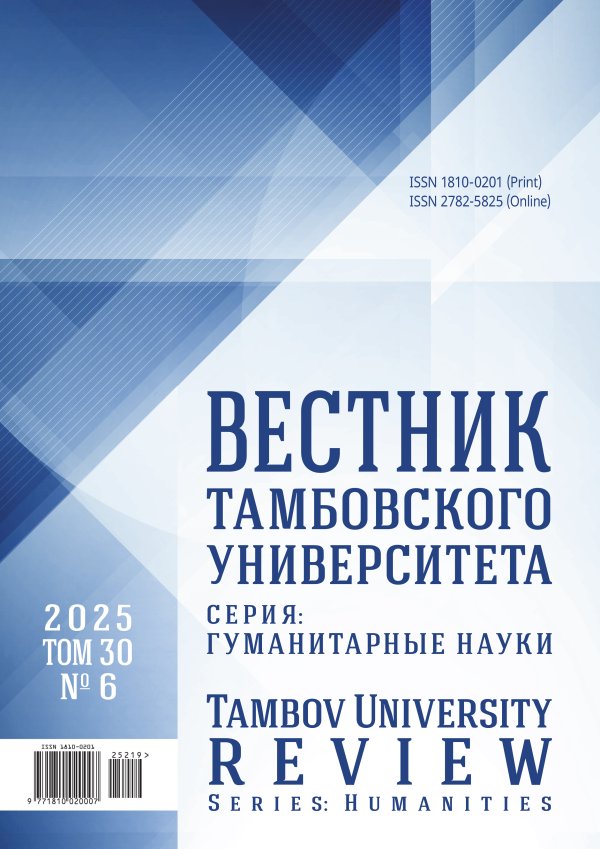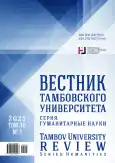Технология комплексного развития координационных способностей у детей младшего школьного возраста с легкой степенью умственной отсталости
- Авторы: Калмыков Д.А.1,2
-
Учреждения:
- Федерация фехтования России
- Центр фехтования Ильгара Мамедова
- Выпуск: Том 30, № 1 (2025)
- Страницы: 234-241
- Раздел: ОЗДОРОВИТЕЛЬНАЯ И АДАПТИВНАЯ ФИЗИЧЕСКАЯ КУЛЬТУРА
- URL: https://bakhtiniada.ru/1810-0201/article/view/297491
- DOI: https://doi.org/10.20310/1810-0201-2025-30-1-234-241
- ID: 297491
Цитировать
Полный текст
Аннотация
Актуальность. В настоящее время развитие координационных способностей у детей с умственной отсталостью приобретает особое значение, поскольку недостаточный уровень двигательной координации отрицательно влияет на их физическое развитие и социальную адаптацию. Дети с легкой степенью умственной отсталости часто испытывают трудности при выполнении повседневных движений, что ограничивает их самостоятельность и уверенность в себе. Их недостаточное развитие снижает мотивацию к движению и ограничивает функциональные возможности ребенка. Цель исследования – разработка и апробация технологии комплексного развития координационных способностей у детей младшего школьного возраста с легкой степенью умственной отсталости.
Материалы и методы. Использовались следующие методы исследования: анализ литературных и документальных источников, педагогический эксперимент, тестирование, а также обработка и анализ экспериментальных данных с применением методов математической статистики. Эти методы позволили глубоко изучить проблему и оценить эффективность предложенной технологии комплексного развития координационных способностей у детей с легкой степенью умственной отсталости.
Результаты исследования. Был проведен педагогический эксперимент, в рамках которого была разработана и апробирована технология комплексного развития координационных способностей у детей младшего школьного возраста с легкой степенью умственной отсталости. Технология основана на поэтапном, последовательном и параллельном развитии координационных способностей с контролем их формирования на каждом этапе и соответствующими корректирующими воздействиями. Эксперимент длился 10 месяцев. Для оценки эффективности технологии были использованы диагностические тесты, направленные на выявление уровня развития координационных способностей у детей. Сравнительный анализ данных показал положительную динамику в улучшении координационных способностей, что подтверждает эффективность разработанной технологии. Практическое внедрение технологии комплексного развития координационных способностей у детей с умственной отсталостью началось с пилотажного исследования и анкетирования специалистов. Результаты позволили определить этапы реализации алгоритма, который лег в основу технологии. В ходе восьми этапов были проанализированы изменения координационных показателей в контрольной и экспериментальной группах. Высокие результаты были достигнуты в статическом равновесии, значительные изменения – в динамическом равновесии, пространственной ориентировке и усвоении двигательного ритма. Важной особенностью технологии стало внимание к точности мелкой моторики. Несмотря на умеренные изменения в координации сложных движений, результаты показали значительный прогресс.
Выводы. Исследование подтвердило высокую эффективность разработанного подхода, который можно применять как в адаптивном физическом воспитании, так и в спортивной деятельности для детей с интеллектуальными нарушениями.
Об авторах
Д. А. Калмыков
Федерация фехтования России;Центр фехтования Ильгара Мамедова
Автор, ответственный за переписку.
Email: mr.kalmik@mail.ru
ORCID iD: 0000-0002-5224-9903
вице-президент; преподаватель
Россия, 119992, Российская Федерация, г. Москва, Лужнецкая наб., 8, стр. 1; 141435, Российская Федерация, Московская обл., мкр. Новогорск, г. Химки, ул. Ивановская, стр. 55АСписок литературы
- Альсуфьев Г.А. Развитие координационных способностей детей с умственной отсталостью // Трибуна ученого. 2020. № 12. С. 45-51.
- Евсеев С.П., Евсеева О.Э. Технологии физкультурно-спортивной деятельности в адаптивной физической культуре. Москва, 2017. 384 с.
- Калмыков Д.А., Дерябина Г.И., Терентьева О.С., Лернер В.Л. Учет иерархичности использования средств формирования видов координационных способностей как необходимое условие совершенствования про-цесса их развития // Вестник Тамбовского университета. Серия: Гуманитарные науки. 2018. Т. 23. № 175. С. 69-80. https://doi.org/10.20310/1810-0201-2018-23-175-69-80, https://elibrary.ru/yartul
- Калмыков Д.А. Развитие координационных способностей у детей младшего школьного возраста с умст-венной отсталостью: комплексный подход // Физическая культура. Спорт. Туризм. Двигательная рекреа-ция. 2019. Т. 4. № 4. С. 34-42. https://doi.org/10.24411/2500-0365-2019-14406, https://elibrary.ru/qoqxcu
- Ковалев Д.А. Особенности развития координационных способностей у детей школьного возраста посредством восточных единоборств // Инновационные формы и практический опыт физического воспитания детей и учащейся молодежи: сб. науч. ст. 10 Междунар. науч.-практ. конф. Витебск, 2023. С. 46-50. https://elibrary.ru/aqfuvi
- Lee K. Enhancing motor performance and physical fitness in children with developmental coordination disorder through fundamental motor skills exercise // Healthcare. 2024. Vol. 12. P. 1-10. https://doi.org/10.3390/healthcare12212142
- Frikha M., Alharbi R.S. Optimizing fine motor coordination, selective attention and reaction time in children: effect of combined accuracy exercises and visual art activities // Children (Basel). 2023. Vol. 10 (5). P. 1-13. https://doi.org/10.3390/children10050786
- Park S.Bo., Ju Yu., Kwin H., Youm H., Ki M.J., Chung J. Effect of a cognitive function and social skills-based digital exercise therapy using IoT on motor coordination in children with intellectual and developmental disabili-ty // International Journal of Environmental Research and Public Health. 2022. Vol. 19. № 24. P. 16499. https://doi.org/10.3390/ijerph192416499, https://elibrary.ru/isvnoj
- Alghadier M., Alhusayni A.I. Evaluating the efficacy of gross-motor-based interventions for children with deve-lopmental coordination disorder: a systematic review // Journal of Clinical Medicine. 2024. Vol. 13 (16). P. 1-16. https://doi.org/10.3390/jcm13164609
- Tran H.T., Li Y.C., Lin H.Y., Lee S.D., Wang P.J. Sensory processing impairments in children with developmental coordination disorder // Children (Basel). 2022. Vol. 9 (10). P. 1-20. https://doi.org/10.3390/children9101443
Дополнительные файлы










